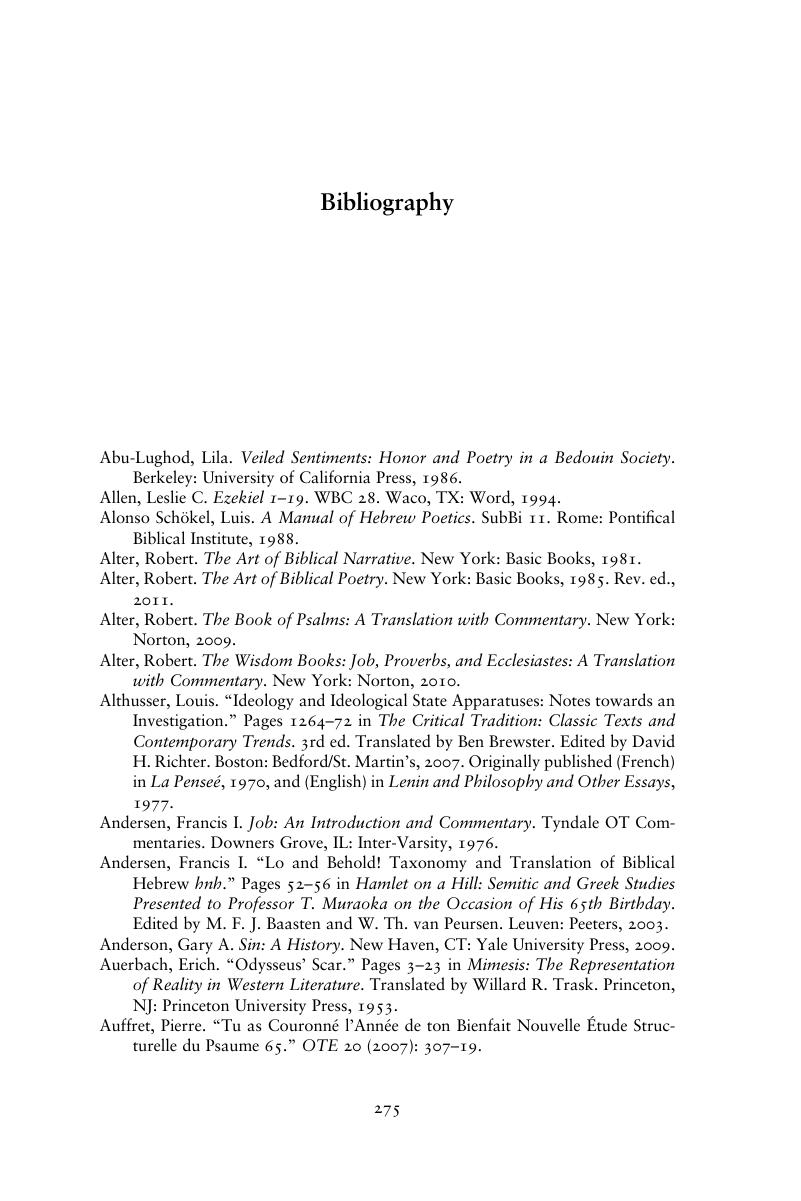Book contents
- Biblical Poetry and the Art of Close Reading
- Biblical Poetry and the Art of Close Reading
- Copyright page
- Contents
- Contributors
- Abbreviations
- Introduction
- Part I The Psalms
- Part II Poetry in Wisdom Literature
- Part III The Song of Songs
- Part IV Poetry in the Prophetic Books
- Part V Poetry in Biblical Narrative
- Bibliography
- Index of Authors
- Index of Scripture and Other Ancient Texts
- Index of Subjects
- References
Bibliography
Published online by Cambridge University Press: 25 September 2018
- Biblical Poetry and the Art of Close Reading
- Biblical Poetry and the Art of Close Reading
- Copyright page
- Contents
- Contributors
- Abbreviations
- Introduction
- Part I The Psalms
- Part II Poetry in Wisdom Literature
- Part III The Song of Songs
- Part IV Poetry in the Prophetic Books
- Part V Poetry in Biblical Narrative
- Bibliography
- Index of Authors
- Index of Scripture and Other Ancient Texts
- Index of Subjects
- References
Summary

- Type
- Chapter
- Information
- Biblical Poetry and the Art of Close Reading , pp. 275 - 292Publisher: Cambridge University PressPrint publication year: 2018



